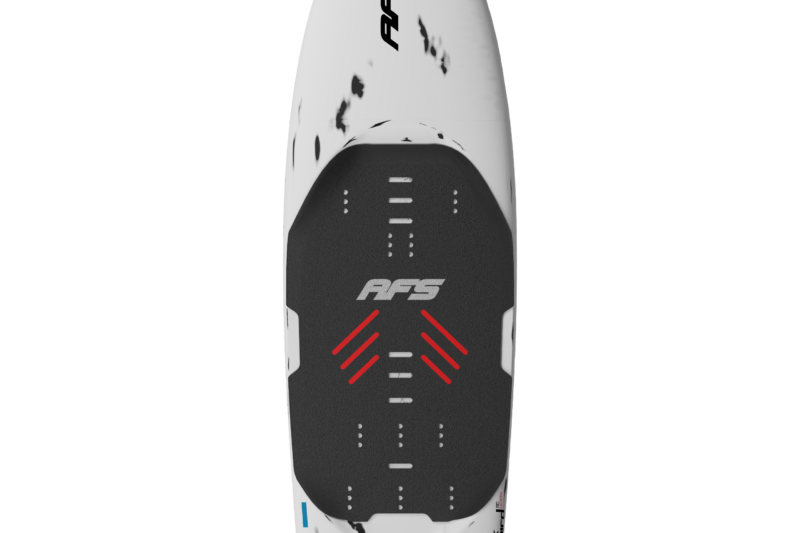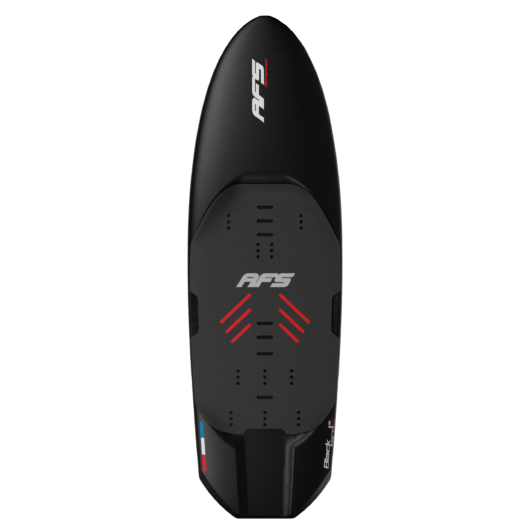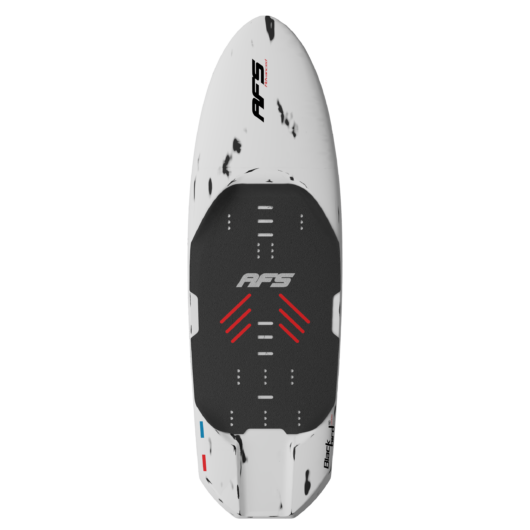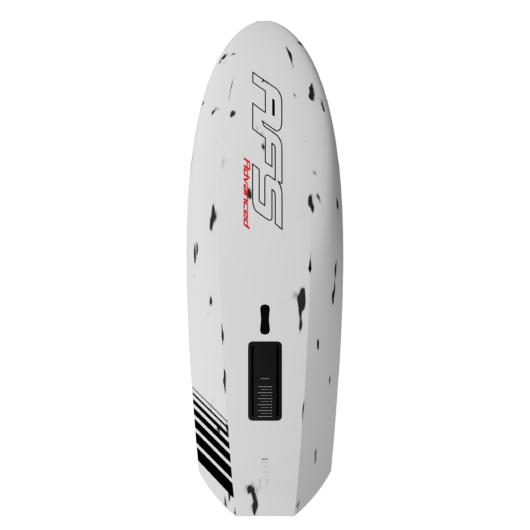The A Team
Slingshot pull together a solid squad of riders and media crew for their recent gear shoot in the high energy environment that is Cabarete in the Dominican Republic. Cue epic conditions and the occasional mid-air drone rescue…
READ MORE

The popular BlackBird board from AFS is back, in all its multi-discipline and stealthy loveliness. This prompted us to get some questions the way of AFS CEO and Chief Board Designer, Tanguy Le Bihan…
Tanguy, it’s great to see the AFS BlackBird back, now as a named mid-lengther. What makes this board stand out?
AFS was a pioneer in developing mid-length foil boards, with the first being that now-iconic BlackBird V1. This new BlackBird Mid-Length series stands out thanks to its unique deck design, a hull specifically optimized for displacement and early planing phases, and a premium full-carbon construction made entirely in our factory in France. These boards are true game changers for new styles of foil riding.
We’re seeing a lot of different interpretations of the mid-length concept across brands. What’s your take now, and how did you bring it to life with this model?
Many mid-lengths on the market are essentially resized downwind boards. The larger the length-to-width ratio, the better the glide in displacement mode – but this approach has its limits: longer boards, thicker shapes, oversized volumes to stay above the waterline… It often leads to boards that feel sluggish when stationary and slow to accelerate.
Our challenge was to create a board with moderate length that still delivers exceptional take-off performance, solid stability, direct foil control, and maximum forgiveness on touchdowns. We achieved this by refining the deck layout, hull shape, volume distribution, and using a lightweight, stiff full-carbon construction.
 |
 |
What key elements did you carry over from the original BlackBird into this version?
We kept the same length-to-width ratios that proved so effective in the V1 for early lift and stability. The recessed deck concept is still at the heart of the design – it allows for a seamless connection with the foil and perfect control over the overall rake. And we’ve retained the front third of the original hull, which made the BlackBird V1 so forgiving on touchdowns.
How does the BlackBird Mid-Length perform in light wind conditions?
It builds speed effortlessly up to takeoff, offering excellent dynamic stability throughout the launch phase. The recessed deck naturally positions your feet, even when riding strapless. Its incredible forgiveness on touchdowns helps avoid nose-dives on small mistakes. But its benefits go beyond light wind – once the breeze picks up, it lets you downsize your foil or wing significantly. It’s a much less physical ride overall.
This board is presented as a bridge between disciplines. What are its key strengths? And does it crossover to parawinging too?!
It’s the ideal wing board for all disciplines outside of freestyle, and it also shines as a SUP foil board in the surf. Its glide, stability, and flight behavior make it a truly versatile foil platform. And yes! One of the core requirements from the start was that this was compatible with parawinging.
So who would you say should consider switching from a more traditional wing board to a mid-length?
Anyone looking for a single board that performs across a wide wind range, and riders who are tired of burning all their energy just getting airborne. Also, this one is for foilers and wingers who love to ride smaller setups and push efficiency.
 |
 |
Slingshot pull together a solid squad of riders and media crew for their recent gear shoot in the high energy environment that is Cabarete in the Dominican Republic. Cue epic conditions and the occasional mid-air drone rescue…
READ MORENicholas Weighall takes on the Koa Kai triple crossing challenge, a series of downwinders from island to island in Hawaii, culminating in the notorious 40-mile Moloka‘i 2 O‘ahu run.
READ MOREFrom its origins as a one-man engineering experiment to a globally respected mast manufacturer, Cedrus founder Kyle Lobisser certainly has a story to tell about his journey to date. Using a precision-driven, data-led approach to mast making, and with sustainability high on the brand’s agenda, Cedrus is proving that the mast can be as performance-defining as the foil itself…
READ MORE